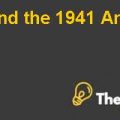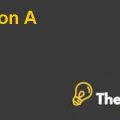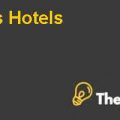
Introduction:
Rosewood hotels and resorts is a privately owned hotel management company that seeks to build an international reputation with distinctive and unique luxury hotels. It ones a collection of 12 hotels all around the world that are so creative and popular that each of them is a brand name in itself. They have no need to attach the corporate name along with their own as from the very start every hotel was advertised by its individual identity. This is due to the core strategy of the company to keep the corporate name at the back and promote each hotel on its individual attributes like its architecture, interior designing and culinary experience called the ‘Sense of Place’ by the Rosewood management. They focused on collection strategy rather than corporate strategy from the very beginning.
In April 2003, when John Scottwas made the CEO of the company he then realized that the company’s name as a brand has very low recognition and promoting this is a great opportunity to discover new level of success. The customer of Rosewood due to lack of awareness of the brand were unable to connect and identify between Rosewood properties. The company had two types of competitors one being the individual brand such as Orient Express, Dorchester and Rocco Forte while some of them were corporate brands like Four Seasons, Regent, One&Only and Ritz-Carlton. Commitment to uniqueness is the U.S.P of this company and it fears that going for corporate branding might jeopardize this feature. There are also concerns relating to other stakeholders of the hotel that needs to be taken into considerations before this decision.
Problem Statement:
Rosewood hotels and Resorts was facing different issues due to its current policy of Individual Branding in the industry. Its original corporate name was not really recognized by its cliental due to which they cannot relate the individual brands as being a part of one company. This strategy was also unsuccessful for a few of its hotels as they were unable to gain business solely under its own hotel name. Competition in the hotel industry sector was very fierce due to which the company was unable to attain the market share that it was capable of achieving.
The solution of these issues was only possible if the company goes for the alternative strategy of corporate branding that was used by a lot of its competitors. The Corporate Branding strategy in the view of its board’s chairman was undervalued by the company as it was considered one of the most successful one in the luxury hotel industry.But the company faces a few internal as well as external reservations of its stakeholders relating to this change. Managers of some individual hotels are not pleased with the idea of promoting brand name instead of hotel name as they think the hotel might lose customer value and potential business due to this change. The customers on the other hand did not want to be associated with a bigger brand name and have emotional attachment with the hotels’ own name and identity.
QUANTITATIVE ANALYSIS:
The Rosewood hotels and resorts are concerned relating to the financial impact of the decision of the new strategy as to check that the huge amount of money invested in the marketing expense every year outweighs the monetary benefits generated by this change. This can be done by comparing the computations done in Appendix 1 and 2. The financial benefits can be measured through the effect on the average gross profit per guest and the Net Present Value difference that will show the value generation in the company due to change of the marketing plan. As we already expect from the data given in the scenario, it will increase the number of visits per guest from 1.2 to 1.3 that will inflate the number of repeat customers and also the level of multi-property visits.Multiple Sclerosis Society Of Canada-London-Grand Bend Bicycle Tour Case Solution
The gross profit per guest is increased by $48 in the first year of implementation of new strategy that is 8% (Appendix 2). This is due to the increase in the visits per guest per annum. The NPV has increased by 17% due to adopting the corporate branding strategy (Appendix 2) that indicates an increase of $ 43.48 million in the value of the firm. As depicted through the financial results that this is a worth investing project as the returns from it is greater than the investment it requires.................
This is just a sample partial case solution. Please place the order on the website to order your own originally done case solution.












